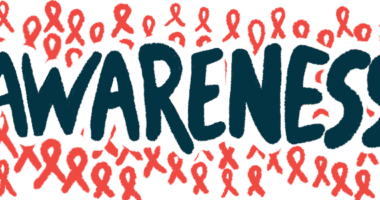Canada funds projects to curb hepatitis C, blood-borne infections
Funding addresses significant public health concern in Canada

Community-based organizations in Canada addressing hepatitis C, the human immunodeficiency virus (HIV), and other sexually transmitted and blood-borne infections (STBBIs) will receive more than CA$9.5 million (about $7.02 million) from the Government of Canada for a dozen projects.
“The funding announced today supports projects that will engage with people living with HIV, hepatitis C and other STBBI, as well as those at risk of infection, to help communities meet their prevention, testing, treatment, and support needs,” Mark Holland, Canada’s Minister of Health, said in a press release.
Hepatitis C is a type of liver inflammation caused by the hepatitis C virus for which there is no preventive vaccine. As with other STBBIs, hepatitis C is spread by contact with blood and bodily fluids, and prevention is mainly through not sharing needles for injectable drugs, and other ways that minimize exposure.
While STBBIs are generally preventable, treatable, and sometimes curable, they remain a significant public health concern in Canada, particularly among Indigenous and other marginalized communities, according to the Public Health Agency of Canada.
Funding to support community-based projects for hepatitis C, HIV, other STBBIs
The new funding includes some CA$6.6 million ($4.87 million) via the HIV and Hepatitis C Community Action Fund, which will support seven community-based projects for hepatitis C, HIV, and other STBBIs.
The AIDS Committee of Newfoundland and Labrador’s Getting to Zero project, for example, will employ a multi-layered strategy to address challenges and risks in those conditions for key populations in Newfoundland and Labrador. The project also seeks to increase access to evidence-based education and services, and boost public awareness about testing options and transmission risks.
“These investments support homegrown approaches addressing the realities we face here in St. John’s, throughout Newfoundland and Labrador as well as the Atlantic provinces,” said Joanne Thompson, Parliament member for the electoral district of St. John’s East in Newfoundland and Labrador.
Additionally, the more than CA$2.9 million ($2.14 million) from the Harm Reduction Fund will support five projects to help mitigate hepatitis C and HIV infection in those who share injection and inhalation drug-use equipment.
One organization, the John Howard Society of Southeastern New Brunswick, will use the funding to expand the reach and capacity of its peer-led outreach team into rural communities around Greater Moncton.
The contributions of community-based organizations are central to improving the health of people in Canada who have HIV and promoting culturally safe community-led models to increase testing in remote, rural and northern settings.
Outreach works to lessen stigmas, discrimination for drug users, homeless
The outreach program, provided in collaboration with community partners, will work to lessen stigmas and care discrimination and to erode barriers to services for those who use drugs and/or are homeless.
“The projects announced under the Harm Reduction Fund help community-based efforts to reduce stigma toward these populations, to prevent new and reoccurring infections and connect people to testing, prevention, treatment and care,” said Ya’ara Saks, Canada’s Minister of Mental Health and Addictions, and associate health minister.
An HIV self-test initiative, originally announced in August 2022, will receive an additional CA$8.6 million ($6.35 million) to support 50 community-based groups through March to counterbalance costs associated with test kit distribution to key populations.
“The contributions of community-based organizations are central to improving the health of people in Canada who have HIV and promoting culturally safe community-led models to increase testing in remote, rural and northern settings,” Holland said.
Efforts to address STBBIs in Canada are informed by the Government of Canada Five Year Action Plan on STBBI, and the Pan-Canadian Framework for Action on STBBI. In 2022, Canada invested CA$106.4 million ($78.62 million) to help address sexually transmitted and blood-borne infections across the country, including CA$8.9 million ($6.57 million) under the Hepatitis C Prevention, Support and Research Program.




